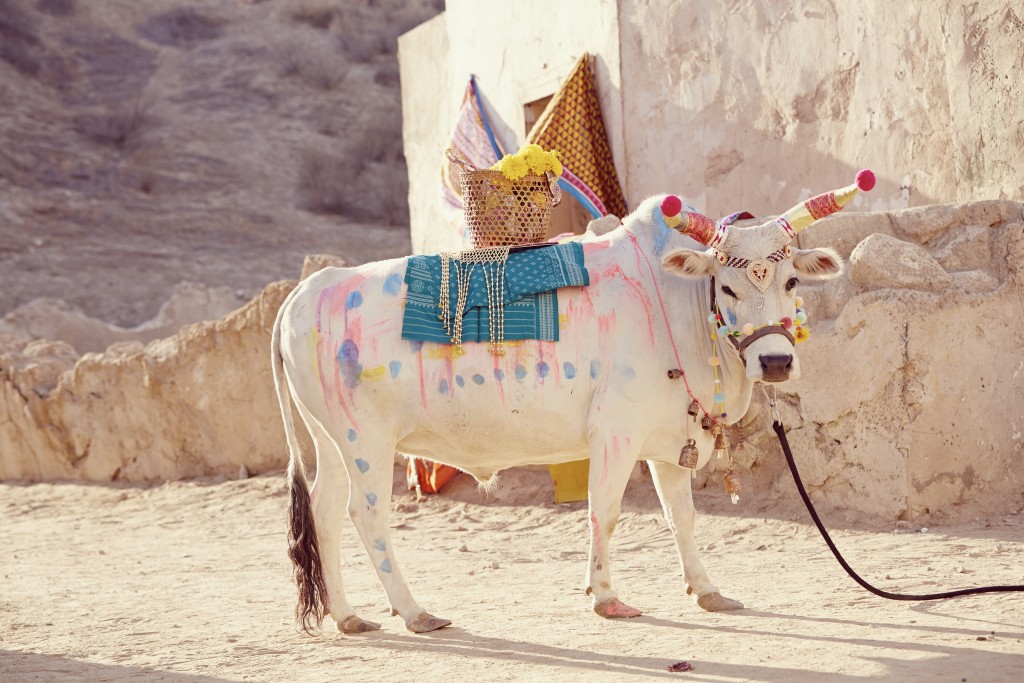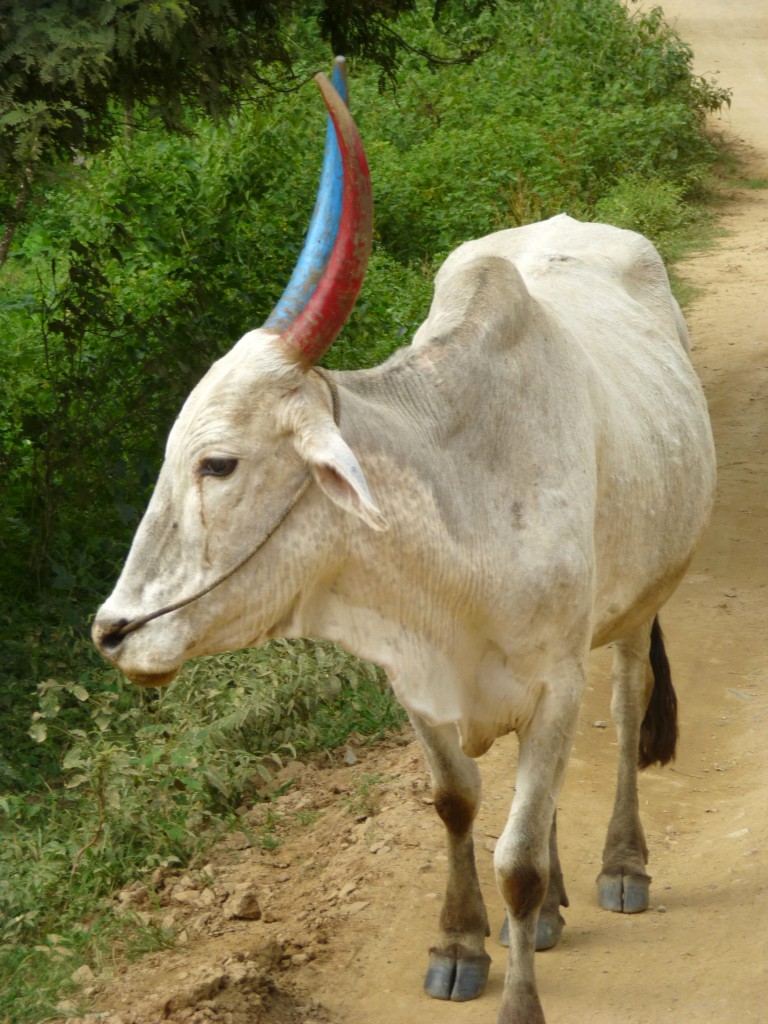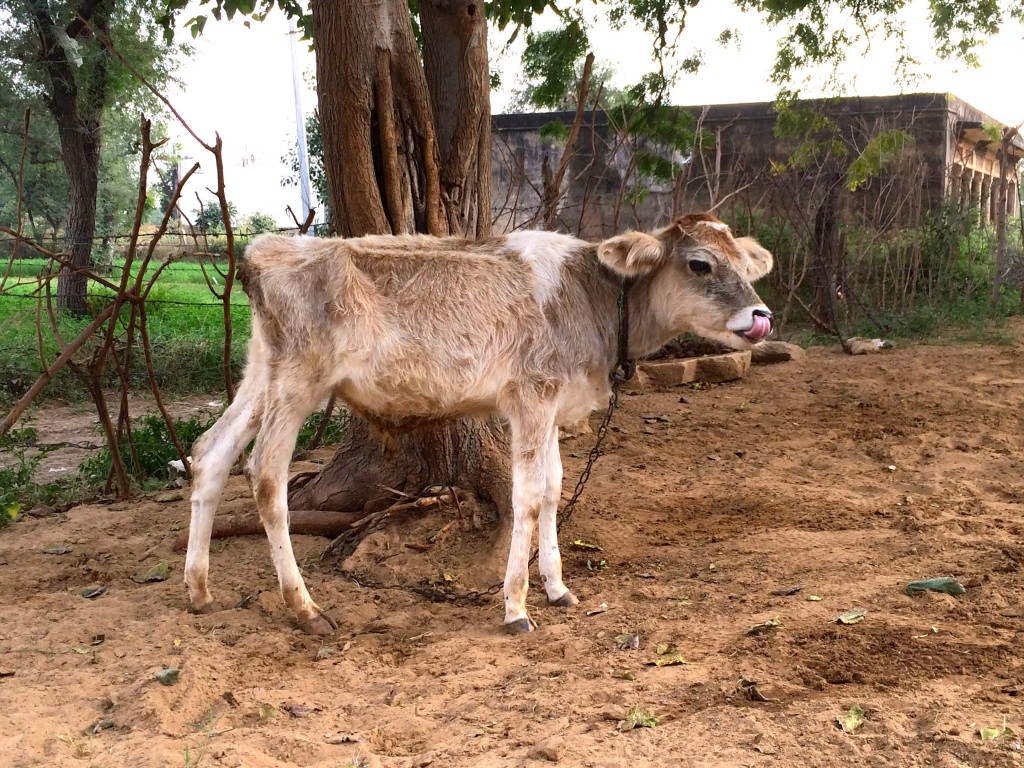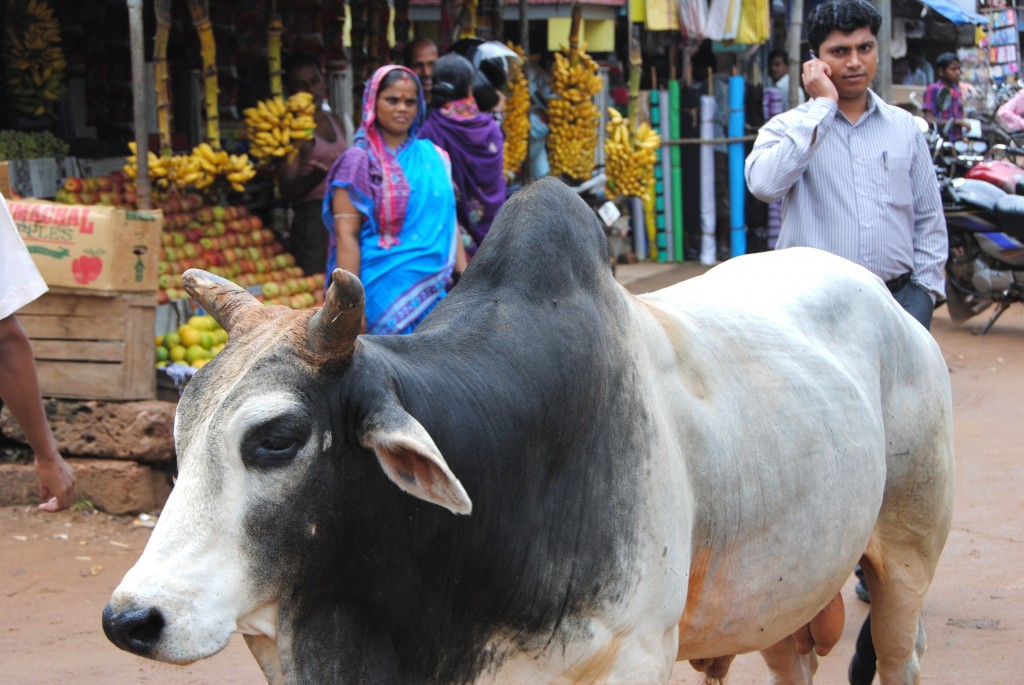
In Hinduism, the cow is a symbol of wealth, strength and abundance. Mahatma Gandhi was once quoted on the subject, explaining that “one can measure the greatness of a nation and its moral progress by the way it treats its animals. Cow protection to me is not mere protection of the cow. It means protection of all that lives and is helpless and weak in the world. The cow means the entire subhuman world.”

Cattle is extraordinarily useful in India. The zebu cow (pictured above) provides the milk that is made into ghee and yogurt. For a more high-quality source of milk, Indian farmers usually invest in a female water buffalo. Oxen are the mainstay of the Indian agricultural system. When monsoons have dampened the dry, cracked earth, the oxen drag wooden plows through the late spring fields. After harvest, they break the grain from the stalk, stomping through mounds of cut wheat and rice.

Honoring the cow inspires the virtues of gentleness and connectedness with nature. In India, more than 3,000 protective shelters called Gaushalas care for old and feeble cows.

Many festivals also center around cows. The Gopashtami festival that commemorates the day Shri Nathji was promoted to cowherd from a herder of calves. On this day in November, herders bring hundreds of beautifully decorated cows and their calves to Nathadwara. They are painted and have gilded horns — ankle bracelets are worn and flower garlands are a plenty!

